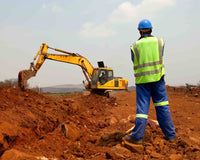WHO Revises Ebola-Specific Standards for PPE

The World Health Organization (WHO) has released revised technical specifications for personal protective equipment (PPE) selection, in order to reflect the latest Ebola news updates. According to the International Safety Equipment Association (ISEA), the revisions are “a step in the right direction,” as they make an important addition by including performance standards in the PPE selection guidelines. The update, released October 31, encompasses information on effective test methodologies for ensuring that PPE can protect healthcare workers from transmitting Ebola.
Ebola is very much a global concern, with recent cases occurring in the United States and Europe, in addition to the outbreak in West Africa. The WHO’s new guidelines are meant to help establish standards to assist healthcare workers the world over in protecting themselves from Ebola transmission, in the hope of ultimately stymying the virus’ spread. An international panel developed the new guidelines after consulting with leading infection control experts as well as healthcare workers with field experience caring for Ebola patients. The panel’s findings emphasize the importance of thorough hazard analysis in selecting PPE. The panel’s specifications highlight that medical organizations must properly select and use protective clothing and equipment based on product safety standards to most effectively protect against biological hazards.
The panel’s findings reinforce the crucial role PPE plays in preventing Ebola transmission. Healthcare workers not only save lives, but they are our first and best defense against the virus’ spread. Those who treat Ebola patients directly are at the highest risk of contracting the disease, leading to some popular paranoia regarding healthcare professionals in the United States and abroad. In response to cases of Ebola transmission by healthcare workers in the United States, some nurses’ organizations have demanded better PPE, including hazmat coverall suits, as well as more thorough instruction in the proper methods of wearing and safely removing PPE. Some of these demands were met after a series of Ebola strikes were enacted across the country in mid-November.
The WHO’s guideline updates for Ebola PPE selection based on hazard analysis form an important addition to the WHO’s essential recommendations for the types of PPE that are essential for healthcare workers. The experts on the WHO panel agreed that it is most important to have gear that protects the mucosae — the mouth, nose, and eyes — from contaminated droplets and fluids. This would include fluid-resistant medical masks, paired with safety goggles. Proper hand hygiene and gloves are also essential. The WHO also recommends that healthcare workers wear a gown/coverall and protective footwear; the Center for Disease Control and Prevention (CDC) and other similar organizations provide guidelines concurrent with those of the WHO.
The ISEA believes that, by linking PPE selection guidelines with product performance standards, the WHO has taken important action to guide healthcare providers to choose the right safety products to best protect healthcare workers. The ISEA draws on its member companies’ deep knowledge of protective product performance standards, and has been working with the CDC to develop effective gear and methodologies to keep healthcare workers safe. They report that demand for PPE has acutely increased in response to Ebola, and that manufacturers are working hard to supply protective clothing and equipment.



